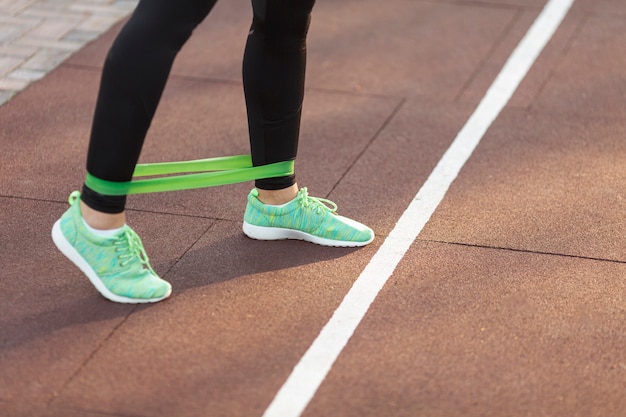Staying active after 50 is essential for maintaining heart health, joint mobility, muscle strength, and overall vitality. One of the simplest yet most effective fitness goals? Increasing your daily step count. But what if walking alone isn’t enough to keep you motivated or build strength? That’s where resistance bands come in.
Resistance bands are lightweight, affordable, and highly effective tools that can transform your walking routine into a full-body fitness strategy. By integrating resistance band exercises into your daily movement, you’ll not only increase your step count but also build lean muscle, improve balance, and boost calorie burn.
Here are 12 actionable, easy-to-follow ways to use resistance bands to help men over 50 increase their step count—complete with progress checks to track success.
Start each walk with 2–3 minutes of high-knee marches using a resistance band just above your knees. This activates your glutes, hip flexors, and core—prepping your body for more efficient walking.
✅ Progress Check: Track how much easier your first 500 steps feel after 1 week of consistent warm-ups.

Place a resistance band around your thighs and perform lateral walks (side to side) for 10 minutes before or after your regular walk. This strengthens hip abductors, improves stability, and increases step variety.
✅ Progress Check: Record how many total steps you take on days with banded walks vs. without.
Sit on a sturdy chair and loop a band around your legs. Perform seated leg presses or knee extensions during commercial breaks. Every 10 minutes of movement equals ~100 steps’ worth of muscle engagement.
✅ Progress Check: Use a step tracker to compare daily totals on days with and without TV workouts.
After every 1,000 steps, stop and do 10 resistance band rows or chest presses. This combines cardio with strength, encouraging more frequent walking to hit circuit goals.
✅ Progress Check: Note how many circuits you complete weekly and track step increases over 3 weeks.
Park at the back of the lot and use the extra steps to your advantage. While unlocking your car or waiting, do standing banded kickbacks or leg abductions.
✅ Progress Check: Count the additional steps gained weekly from parking farther and staying active during waits.
Carry a light resistance band in your bag. While waiting in line or at a red light, perform discreet bicep curls or shoulder presses. These micro-workouts keep your muscles engaged and make walking feel stronger.
✅ Progress Check: Log how many errand-related steps you take weekly and observe trends.
If you walk in segments, use your rest periods for banded glute bridges or standing squats. This keeps your heart rate up and increases overall movement volume.
✅ Progress Check: Monitor total daily steps and note improvements in endurance after 2 weeks.
When walking uphill, use a band above your knees to increase glute and quad activation. This makes each step more powerful and builds leg strength over time.
✅ Progress Check: Track your average step count on hilly routes with and without bands.
After walking, perform banded hamstring curls or hip flexor stretches. Improved recovery means you can walk more frequently and consistently.
✅ Progress Check: Record how many consecutive walking days you achieve before and after adding recovery bands.
For every 1,000 steps, reward yourself with a 2-minute resistance band routine. This gamifies step counting and reinforces consistency.
✅ Progress Check: Track weekly step totals and note motivation levels.
Try a 7-day challenge: walk 3,000 steps daily and complete one banded exercise each day (e.g., Day 1: banded squats, Day 2: rows). Challenges boost accountability.
✅ Progress Check: Compare pre- and post-challenge average step counts.
Use a fitness tracker to log steps and band workouts. Share weekly results with a friend or in a community group to stay accountable.
✅ Progress Check: Review your 4-week step average and celebrate a 10%+ increase.
Increasing your step count doesn’t have to mean just walking more. By integrating resistance bands into your daily routine, you enhance each step with strength-building benefits—critical for men over 50 aiming to stay mobile, strong, and independent.
Start with 2–3 of these strategies, track your progress weekly, and gradually incorporate more. With consistency, you’ll not only hit higher step counts but also enjoy improved energy, balance, and confidence in your daily life.

Fitness

Fitness

Fitness

Fitness

Wellness

Wellness

Fitness

Fitness

Fitness

Fitness

Fitness

Health

Health

Fitness

Health

Health